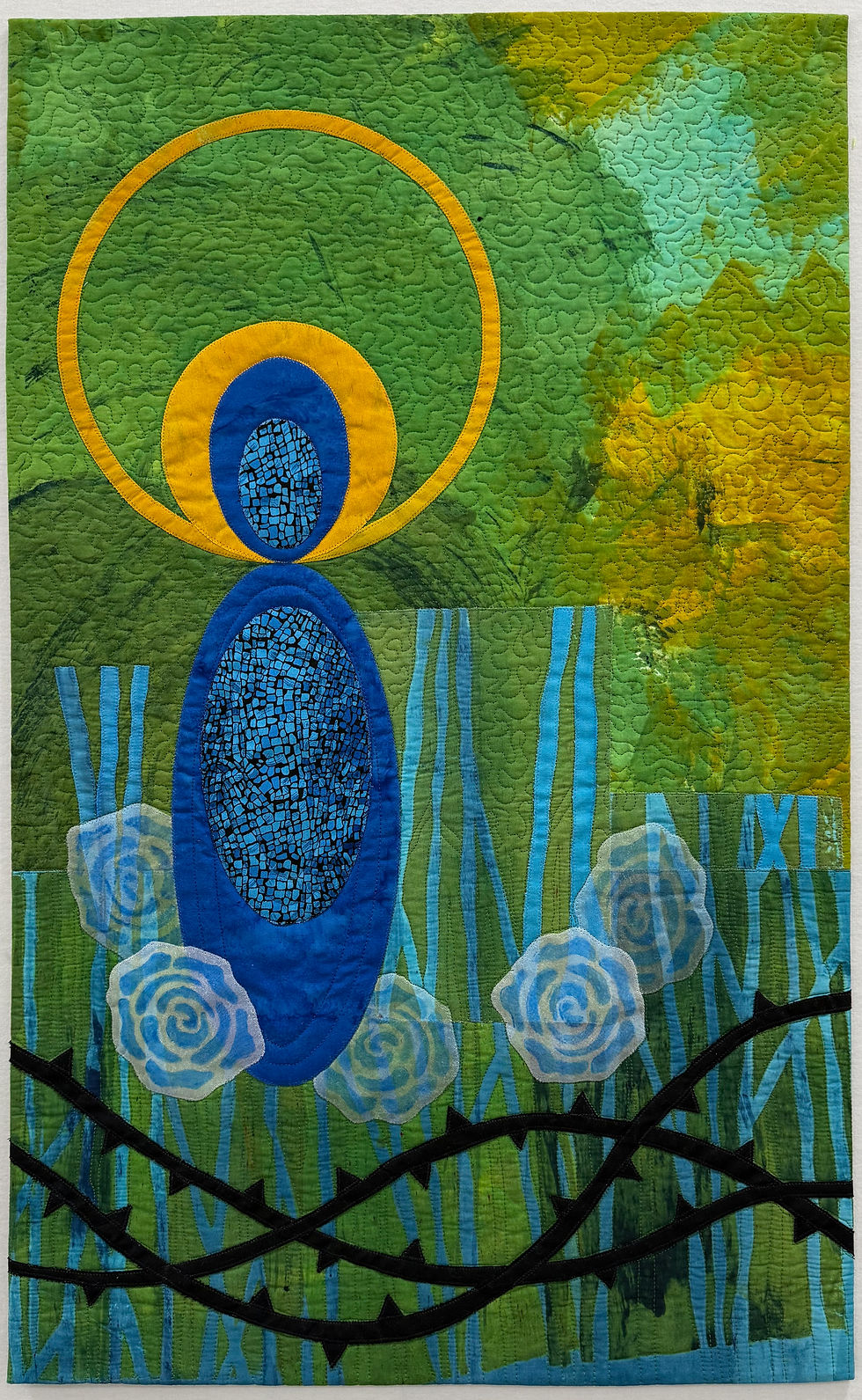Bluebeard's Castle
- Ildiko Polyak
- May 24, 2022
- 3 min read
Just as for everyone else it took me quite a time to settle down on the interpretation of this theme. Until I was 18 or so, I wanted to be an architect, and up to the present I love architecture, so much so that I am ready to travel to a particular place just to see a particular building.
But then after considering a variety of approaches, both in terms of construction and materials for weeks, I quickly dropped this idea and landed on an interpretation that is both representational and abstract. As I said in my introduction in this blog, my quilts are often inspired by other genres of art, often by Hungarian artists, and this quilt is no exception. I suddenly remembered the best-known Hungarian opera, and I knew that this would be it.
The Bluebeard’s Castle by Bela Bartok is based on a French folk tale of Barba Bleu. In the original story Bluebeard is a wealthy nobleman who has been married several times but the wives have all mysteriously vanished. When Bluebeard marries a new woman, she, in the absence of her husband, goes into a forbidden area within the castle, only to find the murdered corpses of Bluebeard's former wives. When Bluebeard hears this, he wants to kill her, however, she summons her brothers who kill Bluebeard, and she lives happily ever after with another man.
Bartók wrote a completely different libretto for his opera. Bluebeard marries a new wife called Judith, who is firmly asked not to enter several private areas within the castle. But Judith persists, and gets Bluebeard to open the seven doors one by one. The first door opens to reveal a torture chamber, the second door is a storehouse of weapons, and the third a storehouse of riches. Behind the fourth door is a secret garden of great beauty; behind the fifth, a window onto Bluebeard's vast kingdom. Blood has stained the riches, watered the garden, and grim clouds throw blood-red shadows over Bluebeard's kingdom. The sixth door hides a silvery lake of tears. After Bluebeard’s lengthy resistance the seventh door opens, and three former wives appear dressed in crowns and jewellery. Bluebeard dresses Judith in the jewellery the ladies wear, and she follows the other wives along a beam of moonlight through the seventh door. It closes behind her, and Bluebeard is left alone as all fades to total darkness.
There are several different interpretations of Bartok’s work, and I tend to go with the one that says that this is a kind of Everyman story, and Bluebeard and Judith represent two opposing ways of handling the inner secrets of our own and the other’s soul. The man is unable to reveal tragic and painful moments from her past, while Judith is ready to face all the fears that she brings from her own past.
According to Bartok’s instructions most productions of the opera have a large dark hall with seven doors on the stage. My version is just a castle, and as such it may be considered a self-portrait. The castle is me, where even some of doors are partially hidden. What do your doors hide? Are you ready to open them? Or show their contents to others?
It was pieced in a traditional fashion, using patterned indigo-dyed fabrics I had made in earlier summers. The whole castle was needle-turned appliqued onto a dark indigo background. For the doors pieces of a thin metal sheet were stitched in place, and then patterns pierced with an awl. The quilt measures 80x58 cm.






Comments